Have you ever wondered, Why do animals have different types of skin hard, thick, and smooth? If not, Now you might be pondering on this puzzle. Right!
In this article, We shall look at different types of skin that are possible in the animal kingdom.
Let’s know what functions it can serve along with pictures.
Table of Contents
Animals with hard skin:
Crocodile
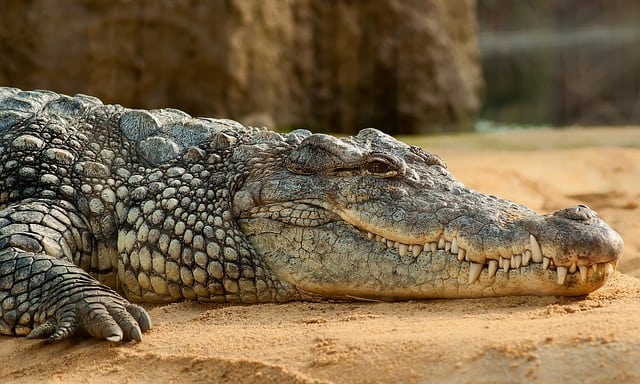
The Crocodile is a large-sized semi aquatic carnivorous reptile that belongs to Family Crocodylidae and Order Crocodilia and is found in Africa, Asia, the Americas, and Australia.
Crocodiles have hard dorsal surfaces made of large osteoderms, a thick skin with scales that provides protection. However, Irrespective of their hardness, they are able to absorb the sunlight.
The osteoderms are also vascularised as it can help to maintain the calcium balance. Interestingly, these can send calcium for eggshell formation.
Alligator
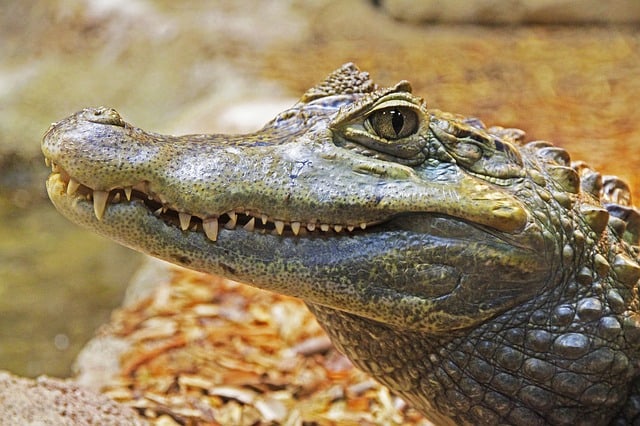
An alligator,including American alligator and Chinese alligator, is a carnivorous animal that belongs to Genus Alligator and Family Alligatoridae and is found in the United States, North Carolina, Texas and other regions of the world.
They have very good skin that is soft and flexible because of the absence of calcium in their skin. These features enable their skin to easily bend without undergoing creasing.
Surprisingly, Alligator leather is beautiful, thicker and smoother than crocodile leather as its skin doesn’t have bony plates and calcium deposits.
Garial

A gharial, also known as the gavial or the fish-eating crocodile, is a species of carnivorous animals belonging to Genus Gavialis, Family Gavialidae, and Order Crocodilia and is found in India, Nepal and Bangladesh and other places.
Surprisingly, Gharial is the longest of all living crocodilians. They have thick skin with non overlapping smooth epidermal scales, also have Osteoderms, meaning bony plates on their dorsal side that acts as armor.
Gharial are killed for their skin, and teeth that are used as indigenous medicine and also for its eggs.
Pangolin

A Pangolins, also known as scaly anteaters, is a nocturnal mammal that belongs to Order Pholidota and is found in Asia, Africa and other places.
They have protective keratin based scales, that are large and overlapping type and are confused with reptiles even though they are not so, but actually they belong to mammals and are the only mammal with keratinised scales.
Interestingly, Its scales are made of the same substance that makes our nails. Unfortunately, they are at great risk due to being constantly hunted for many reasons.
Armadillo armor
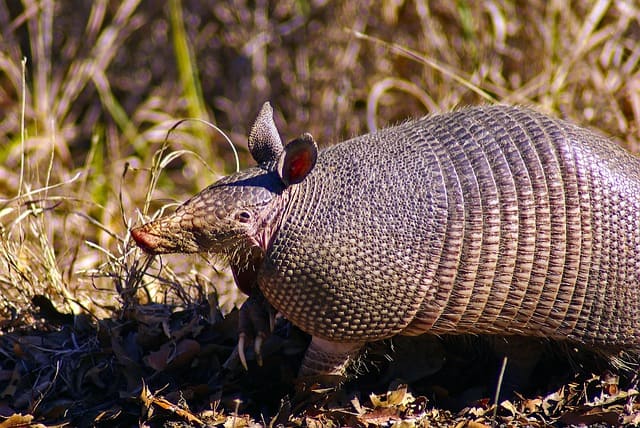
The Armadillos is a mammal that belongs to Order Cingulata and Class Mammalia and is found in Central America, South America and other places.
They have armor-like skin as defense purposes and are made by overlapping plates of dermal bone called scutes. These scutes are dense at the shoulders and hips which are flexible due to separation of skin bands.
They have armor on heads, upper parts of the limbs, and on the tails. However, Its ventral surface has soft skin and fur instead of armor.
Tortoise
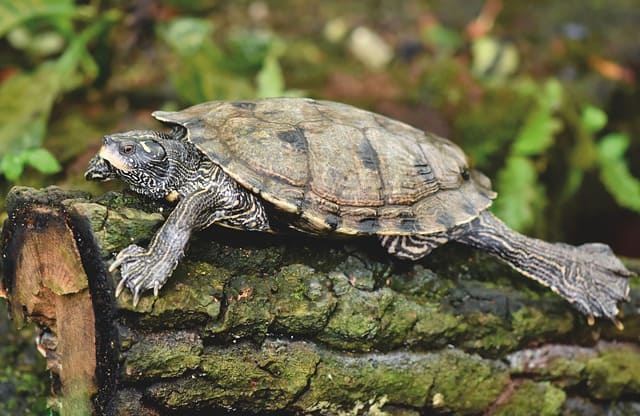
The Tortoise is a shelled and a land-dwelling reptile that belongs to Family Testudinidae and Order Testudines and is found in India, Sri Lanka, southern North America, Southeast Asia, and Pacific islands.
Like reptiles, these tortoises do not have thick or hard scaly skin on their entire body but only it is present in the head, legs, and tails. This skin is on the outer side or at the surface of the animal body and it has an inner surface skin as well.
Its vulnerable parts that are usually exposed to damage are known to have scaly skin while the sensitive neck parts may not possess it.
Spiny anteater

An Echidna, also known as spiny anteaters, belongs to Family Tachyglossidae, Order Monotremata, and Class Mammalia and is found in Australia and New Guinea.
They have numerous yellow-colored spines that are present on the brown furred bodies, especially denser in dorsal and lateral regions. Its sharp spines provide protection against predators such as foxes, feral cats, birds of prey, and Tasmanian devils.
The spines of the spiny anteater do not have barbs.
Animals with thick skin:
Rhinoceros
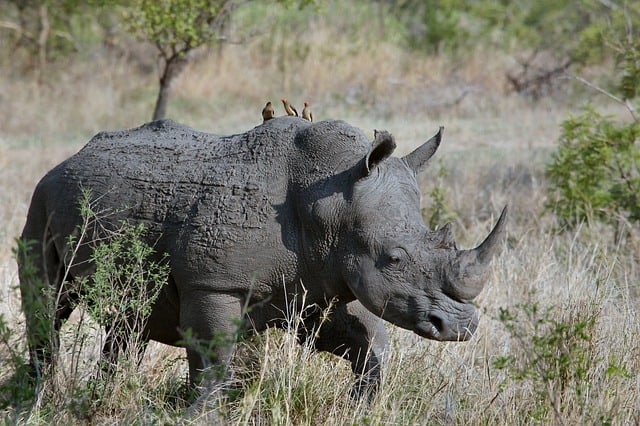
A rhinoceros, including White rhinoceros, Indian rhinoceros, and others, is a herbivorous large-sized mammal that belongs to Family Rhinocerotidae and Order Perissodactyla and is found in Africa, Southern Nepal, Southern Asia, and other places such as zoos of many countries.
They have thick skin that is silver-brown in color, presence of this thick skin, especially on the shoulder, back, and rump makes it appear like they are equipped with armor. Some parts of its body have special skin that is covered in wart-like bumps, especially on legs, and shoulders.
Its protective skin is between 1–5 cm thick and is made of layers of collagen with little hair on its body.
Hippopotamus

The hippopotamus, also known as hippo, river hippopotamus, is a very large-sized mammal that belongs to Genus Hippopotamus, Family Hippopotamidae, and Order Artiodactyla and is found in the Democratic Republic of the Congo, Uganda, Tanzania, Kenya, Ethiopia, Somalia, Sudan, and other places.
Yes, They have thick skin. As you might expect by seeing their pictures, Their thick skin is about 6 cm or 2 inches that provides enough protection against predators such as water leeches, crocodiles, lions, and hyenas. Its skin has little hair on it, a thin subcutaneous fat layer.
One noticeable feature of their skin is it secretes a natural sunscreen substance that is red-colored that is commonly known as ‘blood sweat’ that is actually neither blood nor sweat and can act as an antibiotic against bacteria.
Elephant

An Elephant, including the African bush elephant, the African forest elephant, and the Asian elephant, is the largest terrestrial animal currently thriving on earth that Family Elephantidae and Order Proboscidea and is found in Asia, Africa, and other places.
They have a really thick skin which is about 2.5 cm or 1 inches in thickness with a small amount of sparse and coarse hair and have grey-colored skin or brown-reddish color in the case of African elephants. It has sensitive skin, irrespective of its thickness, so to protect its sensitive skin from sunburning they use mud as a sunscreen.
Upon comparing the Asian and African elephants, We can notice, the Asian elephant has relatively more hair than the African elephants. African elephants have more wrinkled skin whereas the Asian elephant has smoother skin.
Honey badger
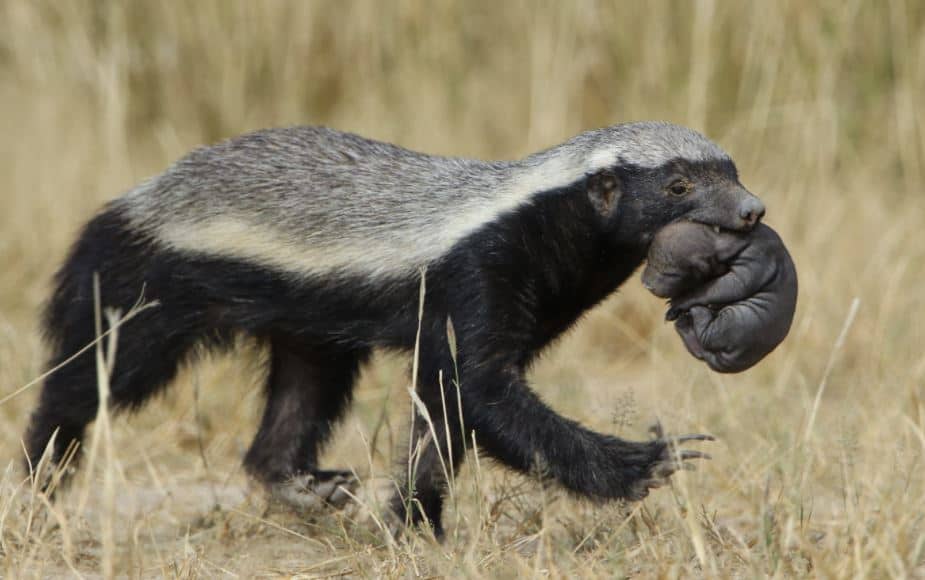
A honey badger, also known as the ratel, is a carnivorous species that belong to Genus Mellivora and Family Mustelidae and is found in Africa, Saudi Arabia, Iran, and the Indian subcontinent.
Most of the strong predators fail and fear to fight a honey badger because of its skin and other defensive abilities. Its skin is about 6 mm or 0.24 inches thick that is loose enough to turn and twist freely because of this feature it can turn against predators even if the predator had already held its skin in its mouth.
Its skin is thick enough to avoid the penetration of bee stings, porcupine quills, and animal bites into their flesh.
Sperm whale
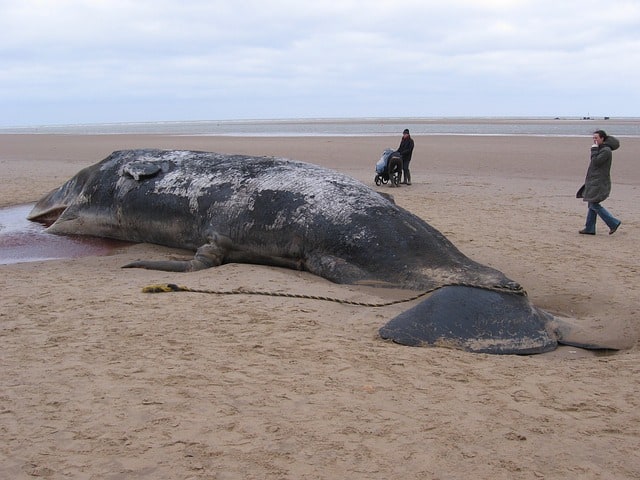
A sperm whale is the largest mammal on the earth that thrives in the ocean and it belongs to Genus Physeter and Family Physeteridae. They are found in almost all of the oceans including the Arctic and Antarctic.
They have a thick skin about 35 cm in thickness that can avoid the penetrations done by the lamprey, and other small blood suckers, predators into their flesh.
Surprisingly, Among the many animals, The thickest skin in the world belongs to these sperm whales.
Camel
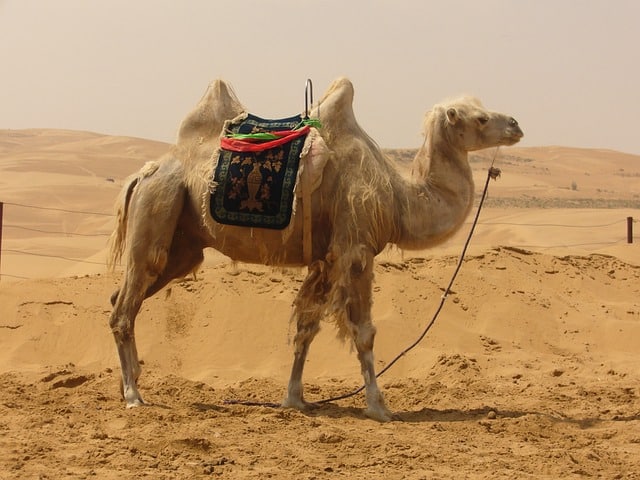
A camel is a humped mammal that belongs to Genus Camelus and Family Camelidae and is found in the Gobi Desert in China, Mongolia, North Africa, and Australia.
As they live in a hot climate they need a skin that’s most suitable for their habitat. Interestingly, they have thick skin with short hairs, this skin strongly attached to their lower tissues. Its skin supports regulating the body temperature because even at 49 °C they are found to not sweat through their skin or coat.
The amazing thing about Camels is even after losing 25 % of their body weight due to sweating in hot climates they are able to live. While most mammals can manage to live if 12% of dehydration occurs to them.
Thorny devil

A thorny devil, also known as the mountain devil, thorny lizard, thorny dragon, is a species of reptile that belongs to Genus Moloch and Family Agamidae and is found in Australia.
A supernatural feature about them is they are equipped with skin that acts like a sponge. It has scales, grooves capable of collecting moisture by capillary action, then through its skin surface water reaches ducts and a network of channels until it reaches its mouth, that’s an unbelievable adaptation and supernatural ability they have.
They can absorb the water through their scales, and skin even against the gravity-that’s amazing!
Animals with smooth skin:
Sphynx cat

A Sphynx cat, also known as Sphynx in short, is a breed of cat that lacks fur and has a muscular body, large eyes, with or without whiskers.
The unique thing about them is they lack fur on their skin. They don’t have fur but a sparse of short hair may be found on their ears, face, tail, and feet. This leads to a sensitive skin with different types of skin patches that would happen in a typical furred cat. Its sensitive skin is prone to some skin conditions like sunburn and diseases such as urticaria pigmentosa and cutaneous mastocytosis.
As you know, furred animals can conserve heat energy better than ones without fur. Thus, As they don’t possess fur they are more susceptible to cold as skin without fur loses heat rapidly.
Frogs

A frog is a carnivorous tailless amphibian that belongs to Order Anura and Class Amphibia and is found almost anywhere except Antarctica.
They have skin that has so many features and functions. Its skin is smooth and thin aids in respiratory function, gaseous exchange, controls body temperature, is slippery that helps to escape from predators, secretes fluids to keep moist surfaces as the moist surface is required for respiration.
Unfortunately, They are declining rapidly because they are absorbing the toxic substances present in their environments through their skin as the toxic substance can kill them.
Shark
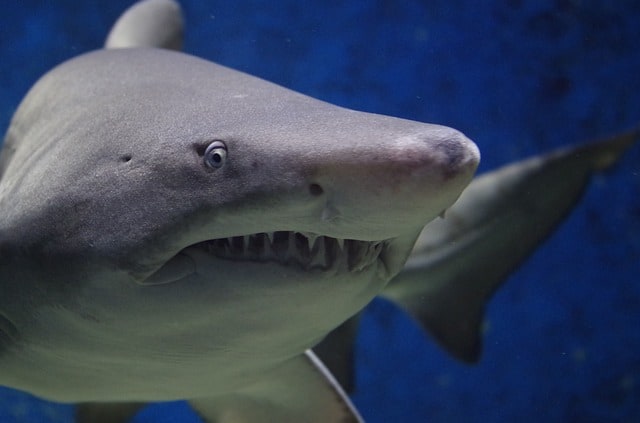
A Shark is a cartilaginous fish adapted to marine or saltwater except for the bull shark and the river shark as these are adapted to both salt and freshwater. These aquatic animals belong to Class Chondrichthyes.
They have a thick skin about 1.5 to 2.0 mm thickness that is protected and covered by micro-flat and V-shaped scales called dermal denticles that look like teeth.
Its denticles help in swimming fast as they can decrease the drag and turbulence of the water.
Dolphin
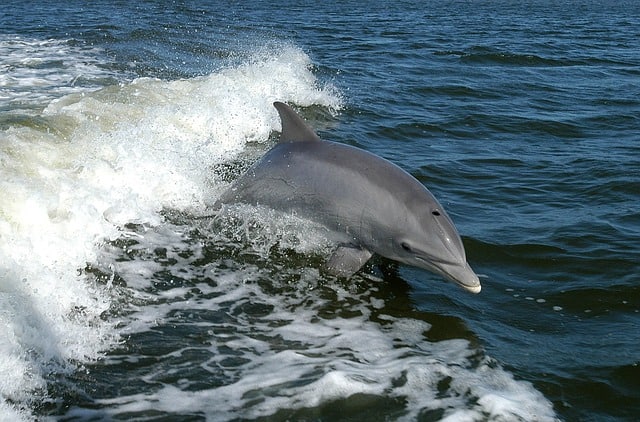
Dolphin is an aquatic mammal that belongs to infraorder Cetacea and Order Artiodactyla that is found in the ocean, brackish waters, and some also in freshwater.
They have thick skin which is above blubber, a blubber, a fat layer below their skin that keeps them warm in the cold water. This feature is known to play an important role in them because it supports keeping them warm, a necessary adaptation of mammals to the water habitat where they also live with cold-blooded animals.
Its skin is specialized to serve many functions such as protection, fat storage, heat regulation, and sensory perception.
Salamander
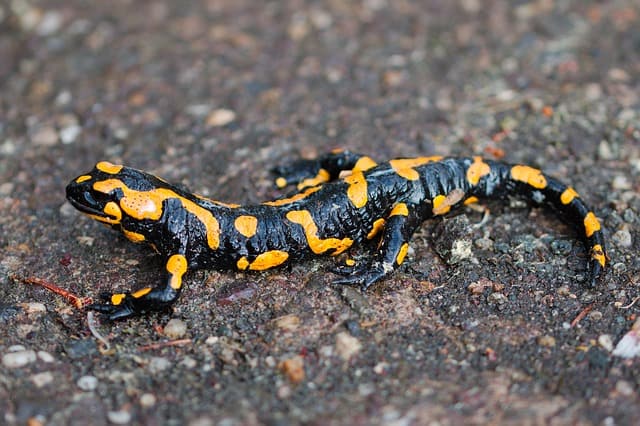
A salamander is a group of amphibians that belongs to Order Urodela and Class Amphibia and is found near streams, lakes, or swamps as it enables moist habitats.
Interestingly, Unlike their relative amphibians such as frogs and toads, These amphibians have tails. Its skin is thin, smooth, moist, permeable to water for respiration, with glands and vascular.
Bornean Flat-headed Frog
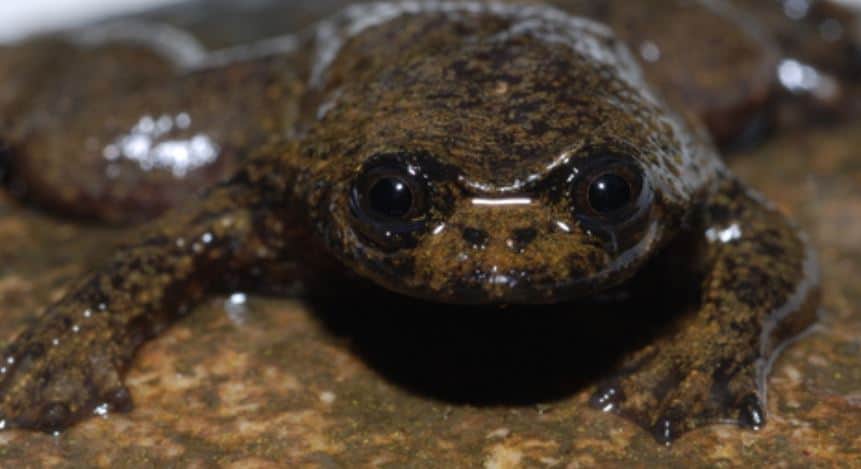
A Bornean flat-headed frog is a species of frog that belongs to Genus Barbourula, Family Bombinatoridae, and Order Anura and is found in the rain forests of Kalimantan, the Indonesian island of Borneo and Kapuas River basin.
Interestingly, These are the only frogs that can breathe entirely through their skin and are the world’s only known frog without lungs. In its body, most of the internal space is occupied by its internal organs such as the stomach, spleen, and liver.
Read More: Animals With Tusks
Sources:
https://www.sciencedirect.com/topics/agricultural-and-biological-sciences/skin-animal
